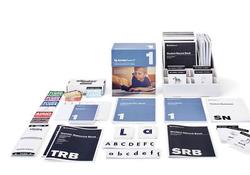The Sonday System in Action: Part 2 of 12

Design features and proven techniques that make the Sonday System the best reading intervention program for students with dyslexia and other struggling readers.
Keeping Students Engaged
Even if your district does not reside in one of the 42 states that have now passed dyslexia laws, you are most likely aware of Orton-Gillingham based instruction. In study after study, an Orton-Gillingham based curriculum has been identified as the best way to serve these students who struggle to read.
The challenge is that, because Orton-Gillingham historically requires lots of lesson planning and extensive training, it can be difficult to implement. This 12-part series highlights the specific features that help make the Sonday System so effective in serving the needs of students, teachers and administrators - by building a curriculum that does not compromise the highly effective Orton-Gillingham approach while making it so anyone can use it to be an effective teacher of Orton-Gillingham.
With elementary-aged kids in general, but especially among struggling readers, short attention spans are an undeniable reality. That’s one reason each Sonday System lesson is designed for exactly 35 minutes. But even within each lesson, the activities are designed to be short and varied, using the philosophy of “less is more.”
Let’s focus on Step 3 of a typical Sonday System lesson: Read Words. Here we ask students to read a smaller set of words multiple times because we know this is more effective than reading a large set of words once. Repeated reading helps to improve the automaticity of reading at the word level, which is the precursor to fluent reading.
To keep things dynamic, we also instruct teachers to vary their read aloud approach. Using three different methods engages students’ brains in different ways and reduces “idle” time.
Echo Reading: The teacher selects one student to be the reader, but all students are looking at the list of words. As the student reads a word, the other students in the group listen. If the word was read correctly, they repeat the word. If they think the student made an error, they remain silent. The whole group is then asked to trace the word in question. After the set of words has been read in this way, the entire group reads the same set of words together.
Read Around the Table: The teacher asks students to take turns reading a word independently. If a student makes an error, the whole group is prompted to trace the word. After completing the list of words in this way, everyone reads the set of words again together.
Cards in a Row: Using the Word Cards included with the Sonday System, the teacher places three cards next to each other on the table. The group read the three words in unison. The teacher then places a new card on top of the existing cards, or switches the order of the words by moving the piles. The group reads the words again. If the teacher hears an error, the whole group should be prompted to “trace” the word.
By breaking down lessons into smaller, fast-moving sections, students stay involved and retain more information.
Next: Mastery Checks
More information about the Sonday System, its Orton Gillingham lesson plans, its cost-effective teacher training requirements and its simple, multisensory reading intervention strategies for students with dyslexia can be found at winsorlearning.com.
Previous articles in this series:
Part 1: Phonemic Awareness
